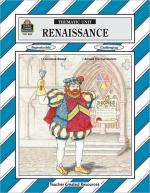|
This section contains 1,616 words (approx. 6 pages at 300 words per page) |

|
Princely Magnificence. For Renaissance princes and monarchs, both north as well as south of the Alps, huge and costly public-works programs, palatial residences decorated in the latest style, extensive libraries, and collections of classical artifacts were the natural corollary of rulership. Fifteenth-century humanists rediscovered a classical ideal that envisioned great private wealth as a prerequisite of civic virtue. They expressed this ideal, in part, by the lavish expenditure of money for the public good as well as private pleasures. In purportedly republican city-states, such as Florence, merchant dynasties sometimes had to counter charges of princely ambition by downscaling their architectural projects. Such concerns probably prompted Cosimo de' Medici to accept the more modest design for renovation of the palace proposed by Michelozzo di Bartolomeo instead of the imposing architectural plans drawn up by Filippo Brunelleschi. In princely states of northern Italy, lavish...
|
This section contains 1,616 words (approx. 6 pages at 300 words per page) |

|




